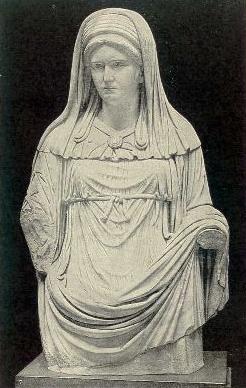
Zoroastrianism is an Iranian religion and one of the world's oldest organized faiths, based on the teachings of the Iranian-speaking prophet Zoroaster. It has a dualistic cosmology of good and evil within the framework of a monotheistic ontology and an eschatology which predicts the ultimate conquest of evil by good. Zoroastrianism exalts an uncreated and benevolent deity of wisdom known as Ahura Mazda as its supreme being. Historically, the unique features of Zoroastrianism, such as its monotheism, messianism, belief in free will and judgement after death, conception of heaven, hell, angels, and demons, among other concepts, may have influenced other religious and philosophical systems, including the Abrahamic religions and Gnosticism, Northern Buddhism, and Greek philosophy.

Parsis or Parsees are an ethnoreligious group of the Indian subcontinent adhering to Zoroastrianism. They are descended from Persians who migrated to Medieval India during and after the Arab conquest of the Persian Empire to escape religious persecution and conversion to Islam. The Parsi people comprise the older of the Indian subcontinent's two Zoroastrian communities vis-à-vis the Iranis, whose ancestors migrated to British-ruled India from Qajar-era Iran. According to a 16th-century Parsi epic, Qissa-i Sanjan, Zoroastrian Persians continued to migrate to the Indian subcontinent from Greater Iran in between the 8th and 10th centuries, and ultimately settled in present-day Gujarat after being granted refuge by a local Hindu king, Jadi Rana.

A veil is an article of clothing or hanging cloth that is intended to cover some part of the head or face, or an object of some significance. Veiling has a long history in European, Asian, and African societies. The practice has been prominent in different forms in Judaism, Christianity, and Islam. The practice of veiling is especially associated with women and sacred objects, though in some cultures, it is men, rather than women, who are expected to wear a veil. Besides its enduring religious significance, veiling continues to play a role in some modern secular contexts, such as wedding customs.

A dakhma, also known as a Tower of Silence, is a circular, raised structure built by Zoroastrians for excarnation, in order to avert contamination of the soil and other natural elements by the dead bodies. Carrion birds, usually vultures and other scavengers, consume the flesh. Skeletal remains are gathered into a central pit where further weathering and continued breakdown occurs.

A headscarf is a scarf covering most or all of the top of a person's, usually women's, hair and head, leaving the face uncovered. A headscarf is formed of a triangular cloth or a square cloth folded into a triangle, with which the head is covered.

A religious habit is a distinctive set of religious clothing worn by members of a religious order. Traditionally some plain garb recognizable as a religious habit has also been worn by those leading the religious eremitic and anchoritic life, although in their case without conformity to a particular uniform style.

The hennin was a headdress in the shape of a cone, steeple, or truncated cone worn in the Late Middle Ages by European women of the nobility. They were most common in Burgundy and France, but also elsewhere, especially at the English courts, and in Northern Europe, Hungary and Poland. They were little seen in Italy. It is unclear what styles the word hennin described at the time, though it is recorded as being used in French areas in 1428, probably before the conical style appeared. The word does not appear in English until the 19th century. The term is therefore used by some writers on costume for other female head-dresses of the period. This headgear was inspired by the headgear then current in the Mongol court.

Christian head covering, also known as Christian veiling, is the traditional practice of women covering their head in a variety of Christian denominations. Some Christian women, based on historic Catholic, Lutheran, Moravian, Reformed, Anglican, Methodist, and Plymouth Brethren teaching, wear the head covering in public worship and during private prayer at home, while others, especially traditional Anabaptist Christians, believe women should wear head coverings at all times, based on Saint Paul's dictum that Christians are to "pray without ceasing", Saint Paul's teaching that women being unveiled is dishonourable, and as a reflection of the created order. In Oriental Orthodox Christian and Eastern Orthodox Christian Churches, certain theologians teach the same doctrine that it is "expected of all women to be covered not only during liturgical periods of prayer, but at all times, for this was their honor and sign of authority given by our Lord", while other clerics have held that headcovering should at least be done during prayer and worship. Genesis 24:65 records the veil as a feminine emblem of modesty. Manuals of early Christianity, including the Didascalia Apostolorum and Pædagogus instructed that a headcovering must be worn by women during prayer and worship, as well as when outside the home.
Many Christians have followed certain dress codes during attendance at church. Customs have varied over time and among different Christian denominations. As with the Bible, the Church Fathers of Christianity taught modesty as a core principle guiding the clothing that Christians are to manufacture and wear.
Dorabji Nanabhoy was reputedly the first Parsi to arrive on the islands Bombay in 1640. This was soon after the Portuguese established the town of Bombay. Dorabji Nanabhoy worked as a manager for the Portuguese. In 1668, when Bombay was given to the British, Dorabji became the tax collector and his family held this position till 1834.

The kushti also known as kosti, kusti and kustig is the sacred girdle worn by invested Zoroastrians around their waists. Along with the sedreh, the kushti is part of the ritual dress of the Zoroastrians.

Fashion in 15th-century Europe was characterized by a series of extremes and extravagances, from the voluminous robes called houppelandes with their sweeping floor-length sleeves to the revealing doublets and hose of Renaissance Italy. Hats, hoods, and other headdresses assumed increasing importance, and were draped, jeweled, and feathered.

The persecution of Zoroastrians has been recorded throughout the history of Zoroastrianism, an Iranian religion. The notably large-scale persecution of Zoroastrians began after the rise of Islam in the 7th century CE; both during and after the conquest of Persia by Arab Muslims, discrimination and harassment against Zoroastrians took place in the form of forced conversions and sparse violence. Muslims who arrived in the region after its annexation by the Rashidun Caliphate are recorded to have destroyed Zoroastrian temples, and Zoroastrians living in areas that had fallen under Muslim control were required to pay a tax known as jizya.

A Zoroastrian wedding is a religious ceremony in Zoroastrianism in which two individuals, a man and a woman, are united. In Zoroastrianism, marriage within the community is encouraged, and is greatly favored in religious texts. The following information will detail ceremony procedures and traditional processes for a Zoroastrian wedding.

A nurse's cap or nursing cap is part of the female nurse's uniform, introduced early in the history of the profession. The cap's original purpose was to keep the nurse's hair neatly in place and present a modest appearance. Male nurses do not wear caps.

Headgear, headwear, or headdress is any element of clothing which is worn on one's head, including hats, helmets, turbans and many other types. Headgear is worn for many purposes, including protection against the elements, decoration, or for religious or cultural reasons, including social conventions.
Dosabhai Framji Karaka (1829–1902) was an Indian newspaper editor and official, known for his history of the Parsis.

Manockjee Cursetjee (1808–1887) was a Parsi businessman and judge from Bombay, remembered as a reformer and proponent of female education.

Jal Phiroj Clubwala Dar E Meher, popularly known as the Royapuram fire temple, is a Zoroastrian fire temple at Royapuram, Chennai, India. It was built in 1910 and donated to the Madras Parsi Zarthosti Anjuman by philanthropist Phiroj M. Clubwala. The temple is one of the 177 odd fire temples in the world, of which some 150 are in India. It is the only Parsi fire temple in Tamil Nadu and surrounding region, including Puducherry and Kerala. The flame in the temple is burning continuously ever since the temple was built and is stoked five times a day by the priest.

Sharifabad, Ardakan is a township in the Central District of Ardakan County, Yazd Province, Iran. It is located near the county capital, Ardakan, and had a population of 4,000 as of the 2006 census. Sharifabad is one of the Zoroastrian centres of Iran, home to numerous Zoroastrian holy sites. Every summer, thousands of Zoroastrians from around the world gather here on pilgrimage. Sharifabad is also notable for the 1,000-year-old Qutbabad aqueduct that runs through the village. The village is home to both Muslims and Zoroastrians who worship separately and respect each other's beliefs.
















